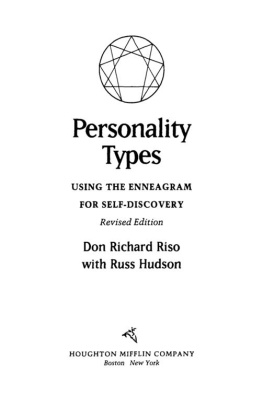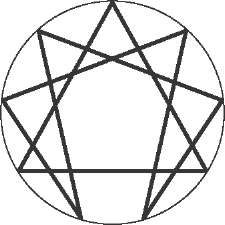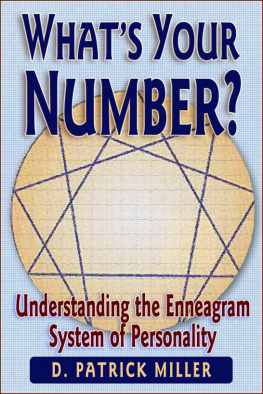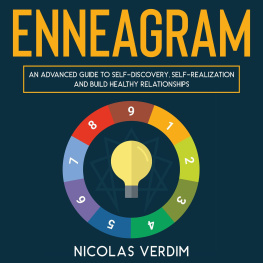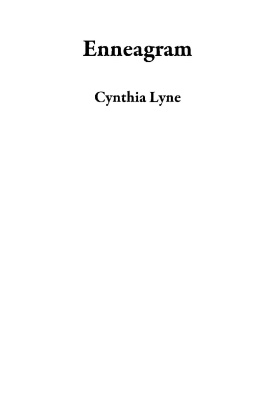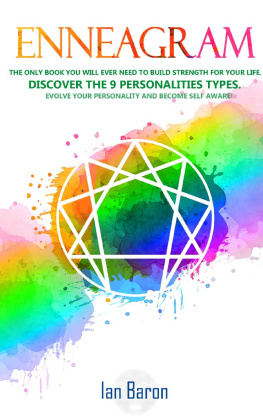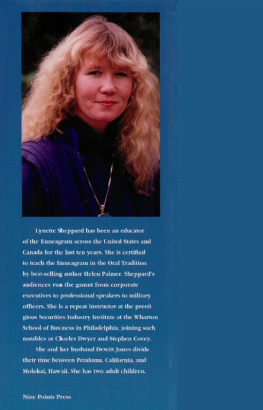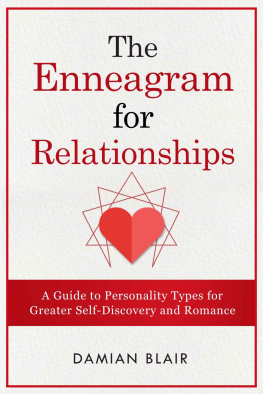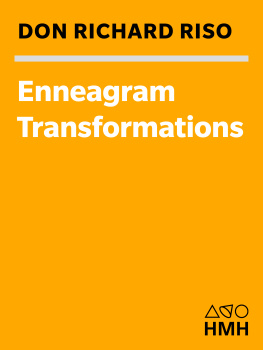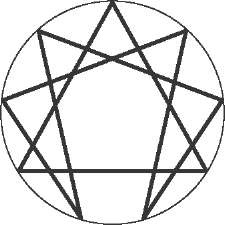Copyright 1996 by Don Richard Riso
All rights reserved
For information about permission to reproduce selections from this book, write to Permissions, Houghton Mifflin Company, 215 Park Avenue South, New York, New York 10003.
For information about this and other Houghton Mifflin trade and reference books and multimedia products, visit The Bookstore at Houghton Mifflin on the World Wide Web at http://www.hmco.com/trade/.
This book is the result of the original work of the authors and represents thousands of hours' work conceptualizing and refining the material. The Enneagram of personality is a modern synthesis of both ancient and modern psychological and spiritual teachings. No body of Enneagram material has been passed down in an oral tradition of any kind. The contents of this book have been copyrighted and may not be reproduced in whole or part by any means whatsoever without the express written permission of Houghton Mifflin Company. Please respect the rights and efforts of the authors by not photocopying or otherwise infringing on the copyrighted material. If you would like to obtain multiple copies of this book at a reduced price, please order them in bulk from the publisher. See the last page of this book for ordering information.
Library of Congress Cataloging-in-Publication Data
Riso, Don Richard.
Personality types : using the enneagram for self-discovery / Don Richard
Riso with Russ Hudson.Rev. ed.
p. cm.
Includes bibliographical references and index.
ISBN 0-395-79867-1
1. Typology (Psychology). 2. Enneagram. I. Hudson, Russ. II. Title.
BF 698.4. R 57 1996
155.2'6 dc20 96-22202 CIP
Printed in the United States of America
DOC 25 24 23 22 21
Artwork by Mark S. Desveaux
This book is dedicated to those
who have made it possible.
They know who they are.
They have my love
and deepest gratitude.
I am a man:
nothing human is alien to me.
TERENCE
Authors' Note
for the Second Edition
At the time of this writing, Personality Types has established itself as a fundamental source book and as a classic in the field of Enneagram studies. It is one of the best-selling and most-translated Enneagram books in the world, having sold over 150,000 copies in the United States alone. Therefore many might wonder why we have wanted to revise it.
The principal answer is that the Enneagram is a work in progress, and as such, both the breadth and the depth of our understanding of this remarkable system are constantly expanding. We are continually finding better terminology, making new discoveries, formulating more profound questions, uncovering new areas for investigation, and seeing more fertile connections with other bodies of knowledge. The possibility for deeper insight into human nature is always present: human nature is open-ended, and so our work with the Enneagram is ongoing.
The Enneagram is a work in progress also in the sense that we are approaching the material in the spirit of scientific inquirythere is no "Enneagram bible" or "sacred scripture" that has been passed down to us to which we can refer. Unfortunately, the first edition of Personality Types was perhaps a source of the mistaken idea that there was a body of knowledge about the Enneagram which had been transmitted through an ongoing "oral tradition" of some kind. Nothing could be further from the truth. The Enneagram is largely a modern development, the work of Oscar Ichazo, Claudio Naranjo, the authors, and other contemporary writers. As such, there will be a need to reassess our formulations and ideas in the light of new discoveries.
Since the original version of Personality Types was published in 1987, we have conducted scores of workshops and Training Programs around the world in which we have shared our discoveries about the Enneagram with thousands of intelligent, well-informed people. In the process of teaching our material, we discovered that while we were on target, or at least on the right track with many ideas, we could often find more effective ways of expressing the fundamental truths of the Enneagram to our students. At the same time, our interactions with them yielded many new insights and refinements which have helped clarify our understanding of the types and of the Enneagram as a whole.
Moreover, as our own personal development has progressed, we have uncovered deeper truths about the function of the personality and its relationship to our essential, spiritual nature. This has produced a more complete and focused orientation to our understanding of the Enneagram itself, one that illuminates it in exciting and unexpected ways. We are more convinced than ever of the power and efficacy of the Enneagram for transformational workbut only insofar as our language and ideas are accurate and precise. The more clearly and specifically we have insight into ourselves, the more possible it is to let go of old debilitating patterns from the past. As we let go of our old patterns, our awareness expands and our sense of self shifts. Accurate, precise, clear language is therefore vitally important, and we continue to search for the most exact expression that we can.
As our teaching evolved, we began to be aware that it was outpacing the expression of the ideas which had been published in the first edition of Personality Types. Moreover, there were also a number of important, original discoveries which could have gone into the first edition, but which were withheld for a variety of reasons. The success of Personality Types has afforded us the luxury of being able to include some of these other findings, as well as to enrich and elaborate on the original book. Houghton Mifflin Company has generously allowed us to do so, and we have added some fifty thousand new words to the original text.
In reviewing Personality Types, we did not feel so much that it required a major overhaul, but that it would be an even stronger book if we could find a way to include more of the refinements and observations that we had been making. In the nine years since Personality Types was first published, we have made many new discoveries which have greatly clarified previously unexplored or unnoticed areas of the types and the Enneagram as a whole. We believe that the inclusion of this new material significantly enlarges our understanding of the types and makes working with the Enneagram easier and more effective. Even so, we have not been able to include all of our new discoveries, since some of them are too advanced for this book, and including them all would strain it to the breaking point.
A noteworthy change in this new edition involves an elusive quality, its tone. We have attempted to give this new edition a softer, warmer voice while retaining the elegance, richness, and precision of the original version's language. As much as possible, we have also attempted to correct any biases or inequalities in our presentations of the nine types. We have wished to be as evenhanded and objective in our descriptions as we possibly could. Our intention has been for readers not only to be able to find their type, but to have a less difficult time recognizing and acknowledging the problematic aspects of their character structure. We knew that this would require a compassionate and gentle approach, and we have endeavored to incorporate this in our revised type descriptions.
One of our most important original discoveries that we have included here for the first time is the Core Dynamics (with their Levels of Development) for each of the nine personality types. Prior to their publication here, the Core Dynamics were available only to students who had attended our Professional Training Programs. This new edition now makes these available to the general public as well as to researchers and mental health professionals. The Core Dynamics are explicitly presented in the appendix at the end of this book, as well as implicitly in the descriptions of the Levels of Development in each of the nine type chapters. The Core Dynamics will greatly enhance understanding of the motivations and ego defenses of the types, as well as greatly clarify the inner logic and range of each type's overall pattern of attitudes and behaviors. The Core Dynamics (with their Levels of Development) are a specific measure of each type's state, giving students of the Enneagram an elegant conceptual framework which, we predict, will be used in a wide variety of fields. Therapists, educators, and business consultantsin fact, anyone wishing to make practical applications of the Enneagramwill turn to the Core Dynamics to accelerate the effectiveness of their work.
Next page
